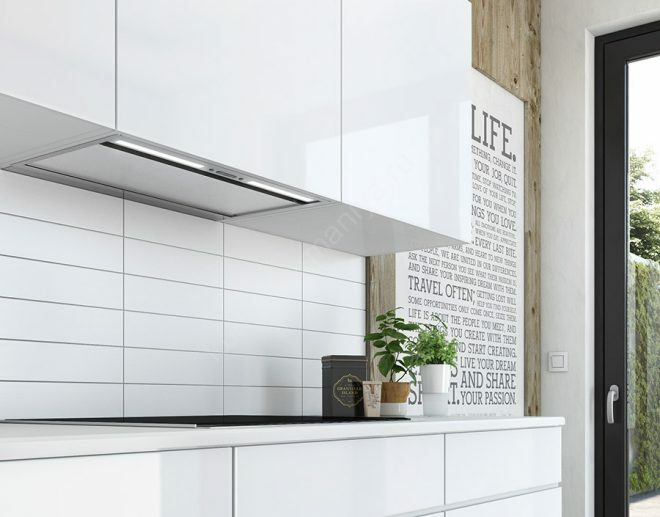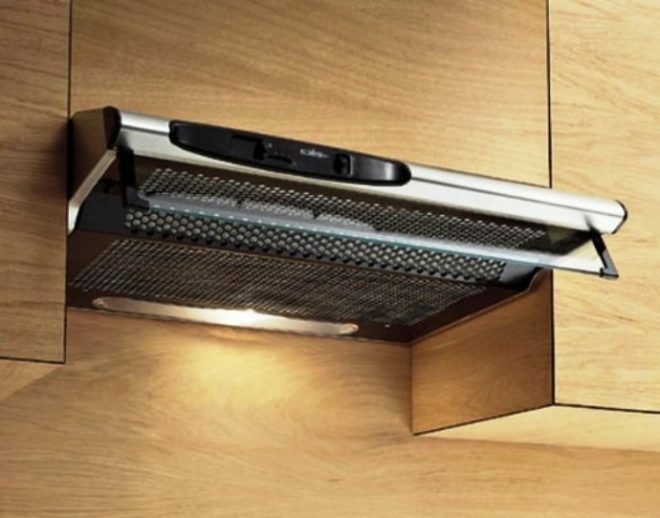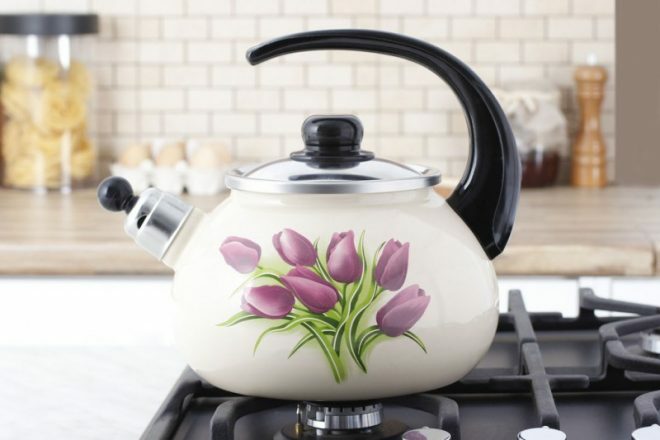 It takes ~ 3 minutes to read
It takes ~ 3 minutes to readIs the air recirculated by the hood guaranteed to be safe for a long time? After 3 months, even the most trouble-free cooker hood requires preventive care. It will be about cleaning and replacing the filter.

Save
Does the hood need a replacement filter?
The question is rhetorical. Of course you need! At least once every six months. Burning, fatty oils turn into soot. Accumulating, they can worsen the rotation of the engine, the resistance will disable the anchor.
- A flow hood exhausts fumes, carbon dioxide through the ventilation duct to the outside. It is productive only when there is enough power for the fence and subsequent driving of at least 600 m3/ hour (for a kitchen with an area of about 10 m3). After a threshold guaranteed by the manufacturer 100–130 hours of operation (about a month of operation), the filter surfaces must be cleaned, and better, replaced.
- Recirculation hood, cleansing, returns air back to the room. The unit, regardless of whether it is an advanced company or a little-known one, with a flat case or a dome - early or later gives the room dust accumulated over a certain period of time along with harmful substances. Do not flatter yourself, using a powerful unit that somehow without cleaning somehow cost. After passing the threshold of 130 hours (after maximum pollution), recirculation models themselves become sources of unsanitary conditions.
Classes, types and types of filters
Classes (by degree of purification):
- Preliminary(rough)cleaning. They can be rolled, cellular, pocket type, sold with ribbons, folding layers. Polyester, non-woven, sinteponovye - capture dust, animal hair. Are applied in all types of household hoods as the fixed or pro-masonry membrane.
- Electrostatic. Remove the remnants of oil mist, aerosol particles invisible to the eye. They are characterized as reliable catchers, but require constant preventive maintenance.
- Panel. In addition to the household cluster, including the above flow and recirculation, there are specific industrial:
- self-cleaning (pneumatic cleaning, used in food production);
- HEPA, ULPA hygiene systems - fine cleaning, trapping 99% of air impurities with a thickness of 0.3 to 0.1 microns, including flower pollen and fungal spores. So that these filters do not become breeding grounds for infections, they are treated with an antibacterial composition;
- photocatalytic capture, then decompose into carbon dioxide + steam bacteria, viruses, while working at room temperature; used for operating rooms, biolaboratory.
The types of air purifying devices depend on the trapping materials:
- metal grid,
- fibrous materials
- woven / non-woven,
- porous carbon
- metal cellular.
Household hoods, like most others, purify the air in steps, that is, they include several different filters at the same time. Ecologically advanced construction involves the installation of intermediate filters in exhaust ducts. Unlike supply and exhaust systems, eco-systems provide return of air masses, which is significantly reduces heating energy consumption, but increases maintenance efforts system.

Save
A string of accessories (blinds on the ventilation grill, butterfly anti-return valve) mounted on the exhaust channel, establishing climate control using systems called Smart house".
The most common types of traps are:
- felt "pockets"
- "Accordions",
- cellular corrugations
- tray-cylindrical,
- drum
- box-shaped
- leafy.
Grease filter
Grease filter for household hoods is made from:
- three-layer aluminum mesh or corrugated metal plate;
- grease trays / charcoal boxes behind the synthetic winterizer membrane.
Disposable and reusable models
Each manufacturer develops its own type of filter, recommending only it. Non-interchangeability of consumables is dictated by commercial interests. Even the same-sized boxes and drums have various button accordions (mounts).
Tip: in order to finally remove polluting particles from the filter, it is necessary to keep the hood turned on 15 minutes after the end of cooking.

Save
More durable aluminum, steel, box, drum with coal filling. Unlike non-woven ones, they serve longer than the warranty period, but subject to regular washing. Disc, box, filled with coal, are also among the disposable. Their washing is not provided, although it is practiced by housewives everywhere. Homeowners who care about the air of the apartment strictly follow the manufacturer’s instructions and monitor the filter resource usage on the display, replace it on time.
Semi-professional
A positive market trend was the emergence of semi-professional hoods with grease catchers from a single sheet of stainless steel, pressed on the principle of “mole hole”. Fence with cellular plates occurs through inconspicuous contour gaps near the body, and there are no non-woven membranes on semi-professional hoods.

Save
The new, elegant, unpretentious brand from the Italian company Elica and the Spanish CATA was praised by food workers, restaurateurs, and housewives. This is understandable: stainless steel is easy to clean, it has a presentable look. The removable plates of these hoods can be washed even in the dishwasher.
Charcoal filter for hoods in the kitchen
For recirculation hood models, a charcoal filter is required, since it is important not only to remove extraneous odors in them, but also to return the cleaned air back to the room. Coal "traps" are installed behind the grease filters, they are based on activated carbon, which perfectly absorbs odors. But it is worth remembering that the adsorbent, which is part of coal models, like a sponge, absorbs pollution, and over time the air through it will get worse, exhaust throughput reduced by 15–20%.
Carbon filters most often do not come with exhaust hoods, so they should be purchased separately as they wear. Of all the details of carbon filters, only one is truly valuable - this is a box for coal granules. It is easily washed with warm water and ordinary detergents. Foaming is enhanced by adding baking soda.

Save
Filling - coal is sometimes calcined. Having poked a non-woven membrane with a knife, the box is opened. The carbon rods are poured onto a baking sheet, brought to red on hot coals or a gas burner.
This method gives a positive result in part. Apparently the fat was removed, but it sintered, forming an invisible film. The roughness of the granules must be restored by grinding the coal capsules into smaller fractions.
The membrane itself can be replaced by cutting out of a synthetic winterizer (non-woven) a circle similar to the old one, then gluing it with rubber glue (it comes off more easily). It is important to use thin non-woven material stitching it in layers - to ensure strength. Membrane synthetic winterizer (even bactericidal) is sold by specialized stores.
But the factory synthetic winterizer will last longer if it is covered with a Berez type coarse calico. A piece of fabric is outlined, sheathed “under the rubber band”, pulled, periodically stretched.
Thrifty people who use the hoods of advanced companies bypass the purchase of expensive filters as follows: keep the old drums, but fill them with charcoal rods from cheap analogues. The prices of domestic discs are cheaper than foreign ones (sometimes the price difference is 1/10!), And the filling is the same: pressed coal dust.
Filter replacement table: how much is enough?
How much replacement filters will suffice will tell the table below.

Save
Filters |
Type of |
Frequency of replacement (care) |
Synthetic |
Disposable |
Replacement every 1.5–2 months |
Metal |
Reusable |
Flushing every 2-3 months |
Coal household |
Disposable |
Replacement every 3-4 months |
Coal professional (industrial) |
Reusable |
Replacement once in 1-3 years |
Filter care, do-it-yourself cleaning and replacement
If with Long Life plates - as simple as possible, then the rest are considered to be wearing, subject to mandatory replacement. Different manufacturers have their own recommendations.
Coal grease catchers of the company:
- Elica change every 2 months,
- Elikor, Jetair - 3-4 months,
- Falmec - 4 months
- Fabriano - 4-6 months,
- Gaggenau - twice a year,
- Krona - from 6 to 12 months,
- Bosch - once a year.

Save
Popular brands
In addition to the aforementioned Elica, which has rapidly conquered the Russian market, other manufacturers successfully work Italian household appliances: Faber, Ventolux, Smeg, Ariston, Lex, Best, Jet air, Delonghi, Indesit, Ardesia, Jantar, Candy Therefore, which filter for the hood is better depends on the financial ability of the buyer. Each of the companies creates visor, inclined, flat T-samples, slider, mounted, mortise and angular models.
- Akpo and Perfelli are Polish.
- Krona, Siemens, Kuppersberg, Zigmund, Teka, Kaizer, Korting, Hansa, Gunter Hauer, Akvilon, Bauknecht, Germes Pyramida - German,
- Russian Gorenje, Elikor have long improved the noise level of their products, as well as the Belarusian Gefest. Now belong to global brands.
- Franke, MBS, Zirtal - Swiss, recognizable by fantastic cubic, spherical shapes.
- Beko, Zimfer - Turkey - occupy the budget segment of the market.
- Whirlpool - USA - creates facades that resemble picturesque floral still lifes.
- Oasis - made in China.
- CATA, EXITEQ - from Spain.
- Maunfeld - UK production.
- Shindo, Samsung - Korea.
- Elektrolux - Sweden.
- IKEA - Netherlands.
- Eleuys - Ukraine.
The best way to get rid of soot is to cook in sealed pots on electric hobs. When buying an expensive "sophisticated" exhaust system, you should pay attention to the availability of consumables and their cost, to think about how ready the family budget is for the needs of a new kitchen device.
With great interest I always read your comments to my articles. If you have any questions, feel free to ask them, leave, you are welcome, Your feedback in the form below. Your opinion is very important to me. Thanks to your criticism and thanks, I can make this blog more useful and interesting.
I would be very grateful if you rate this post and share it with your friends. This is easy to do by clicking on the social media buttons above. Do not forget the article you like Add to bookmarks and subscribe to new blog posts on social networks.


